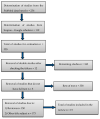Zika Virus and the Risk of Developing Microcephaly in Infants: A Systematic Review
- PMID: 32471131
- PMCID: PMC7312578
- DOI: 10.3390/ijerph17113806
Zika Virus and the Risk of Developing Microcephaly in Infants: A Systematic Review
Abstract
The global epidemic of Zika virus has been a major public health problem affecting pregnant women and their infants. Zika virus causes a viral disease transmitted to humans mainly by the infected Aedes mosquito bite. The infection is not severe in most cases; however, there is evidence that infection during pregnancy may be associated with fetal genetic abnormalities (including microcephaly). In addition to microcephaly and other malformations, some specific lesions in the central nervous system have been reported. The aim of this systematic review was to determine the risk of developing microcephaly in infants whose mothers were infected with Zika virus in pregnancy. Epidemiological studies and case reports were incorporated in our review, finally including 15 articles from an initial pool of 355 related papers. Most studies have linked maternal infection during pregnancy to the development of neonatal microcephaly. The period considered most dangerous is the first trimester and the beginning or the whole of the second trimester. In order to understand the relationship between Zika virus and microcephaly in infants, a cohort study will be able to estimate the time from the onset of Zika infection and the full spectrum of adverse pregnancy outcomes.
Keywords: Zika virus; Zika virus and congenital malformations; Zika virus and microcephaly; Zika virus and pregnancy.
Conflict of interest statement
The authors declare no conflict of interest.
References
-
- Division of Vector-Borne Diseases (DVBD) Division of Vector-Borne Diseases. NCEZID. CDC. [(accessed on 31 March 2020)]; Available online: https://www.cdc.gov/ncezid/dvbd/index.html.
-
- CDC Press Releases. [(accessed on 13 February 2020)]; Available online: https://www.cdc.gov/media/releases/2016/p0729-zika-infections-puerto-ric....
-
- CDC Facts about Microcephaly. Birth Defects. NCBDDD. CDC. [(accessed on 31 March 2020)]; Available online: https://www.cdc.gov/ncbddd/birthdefects/microcephaly.html.
Publication types
MeSH terms
LinkOut - more resources
Full Text Sources
Medical


